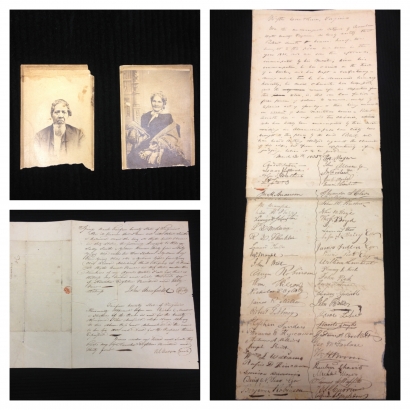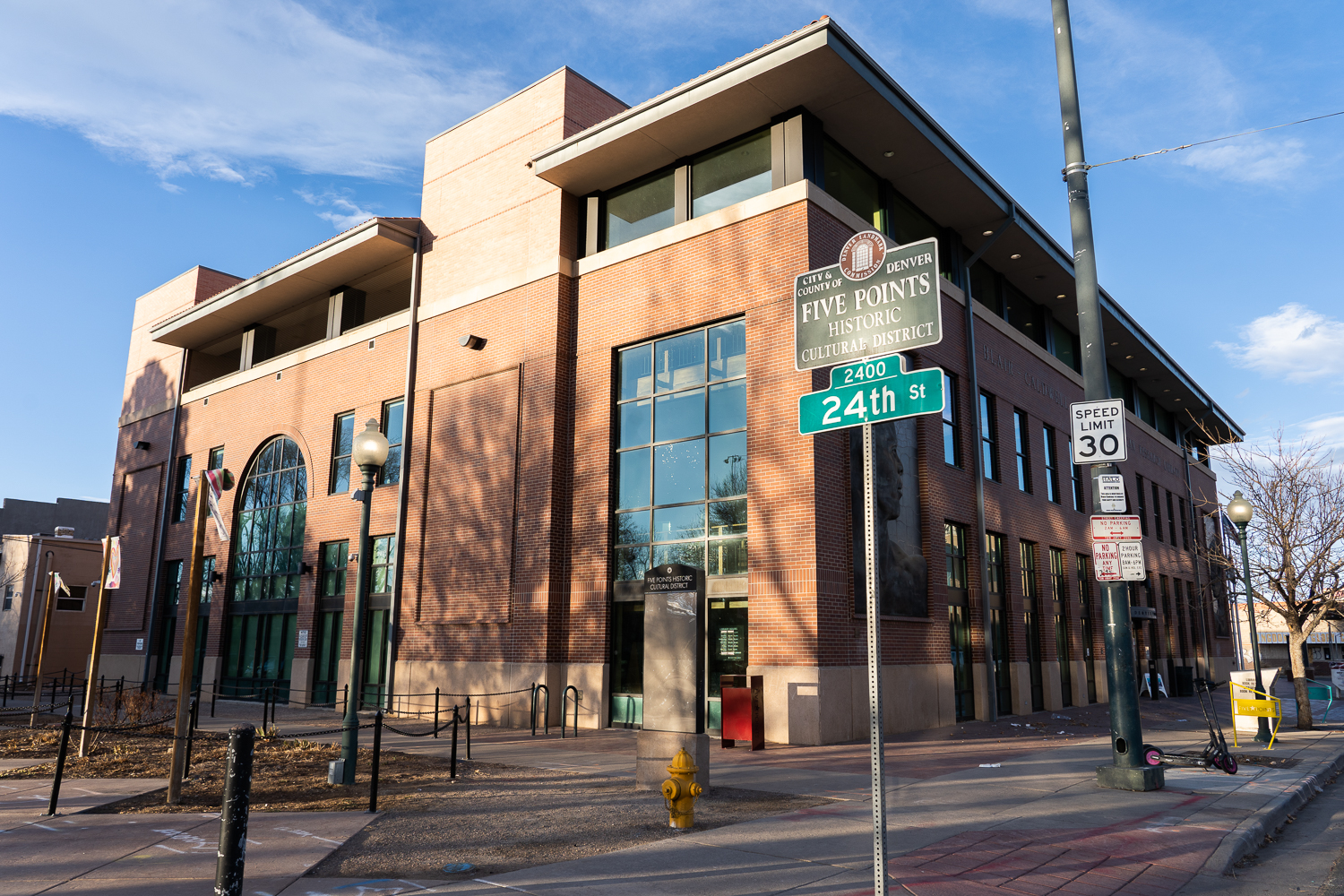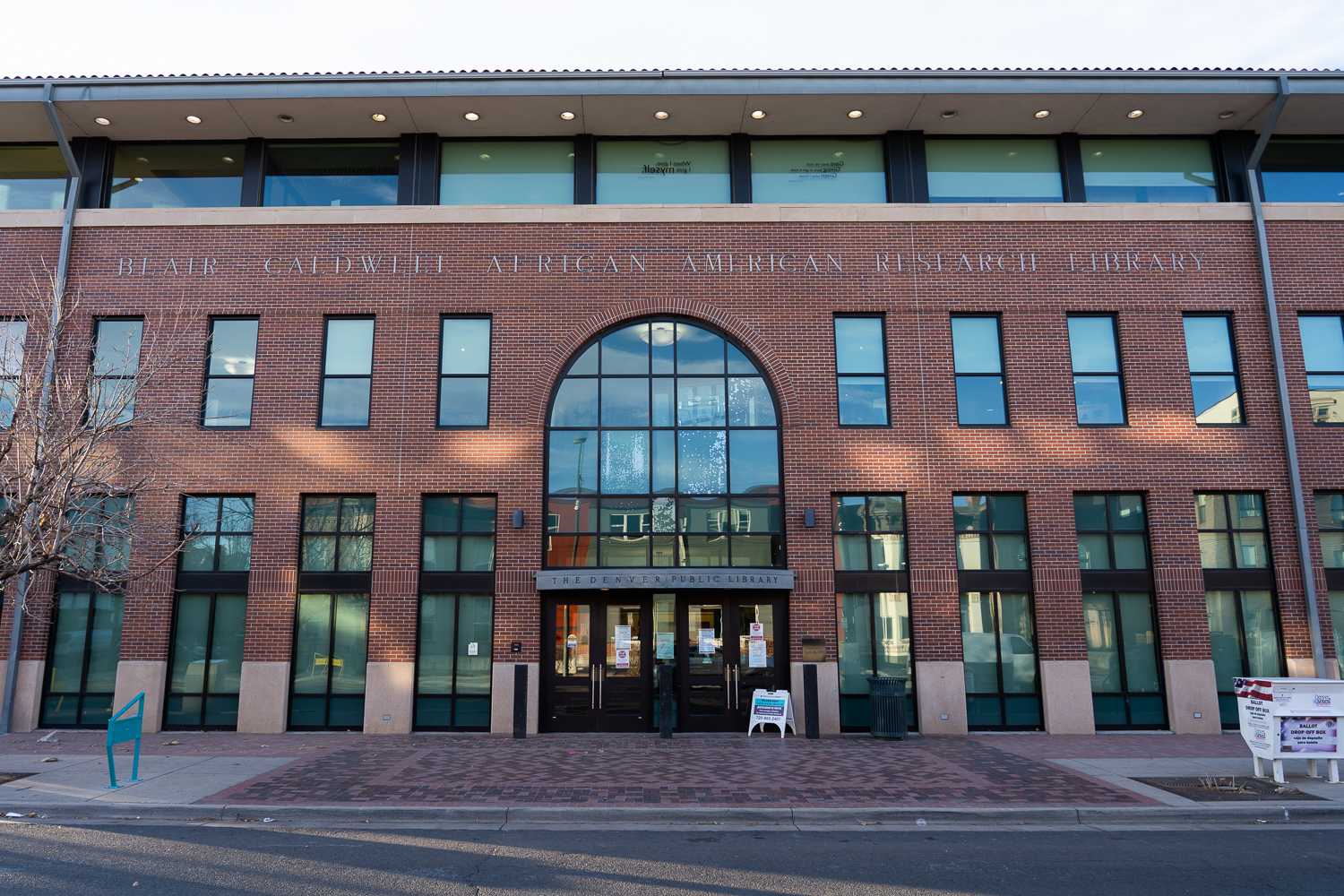Denver’s Blair-Caldwell African American Research Library is only about 18 years old. But its archives boast of items that can’t be found anywhere else — not even in century-old, renowned centers for history and research.
“Most people are quite surprised at the depth of our collection, in addition to the knowledge of the staff, because we’re so new,” said Terry Nelson, senior special collection and community resource manager at Blair-Caldwell. The library opened in 2003, with the effort spearheaded by Wellington Webb, the first Black mayor of Denver, and his wife, Wilma Webb — who chose to name it for the first Black Denver school board president, Omar Blair, and the first Black Denver city council member, Elvin Caldwell.

Since then, the library’s resources have steadily grown. In addition to serving traditional library purposes, the resource center in the Five Points neighborhood devotes its second floor to a vast set of oral histories and collections. Those collections made up of documents, recordings, photographs and more, preserve the lives of Black individuals in Five Points and North America. Additional documents, such as slave release papers and old yearbooks from Denver’s well-known Manual High School, are also kept at the library.
“(Webb) found in his travels that there was so little written up, particularly for the kids to study,” Nelson said. “So kids’ knowledge of the African-American culture is very limited. This collection here is one place they could start to find out about their heritage.”
Right now, Denver Public Library has closed its buildings to prevent the spread of COVID-19. But when Blair-Caldwell reopens, visitors can register for a time to view, study and take photos of the historical items. In the meantime, Nelson said the library is in an ongoing process to digitize its archives so visitors can view them online.
The library hopes to reopen to the public soon. In preparation for visitors’ return, Nelson highlighted just a handful of the library’s most popular archives and collections that library-goers can check out.

Charles Burrell Collection: Charlie Burrell made history as the first Black man to be part of a major American symphony — in 1949, he was hired by the Denver Symphony Orchestra. The collection details Burrell’s countless musical accolades, from his time playing in the band for an all-Black naval unit in the ‘40s, to his time in the renowned San Francisco Symphony Orchestra. Burrell’s path to stardom is chronicled through newspaper excerpts, recordings and other historical documents.
James Harrison Scrapbooks: Denver firefighter James Harrison arranged six scrapbooks that are now part of the library’s archives. The scrapbooks pertain to three distinct topics: A first set focuses on Denver and world affairs in the ‘40s, ‘50s and ‘60s. A second provides historical documents about sports and sports stars around the 1960s era and a third includes newspaper clippings and telegrams related to firefighters.
Rachel Noel Papers: The first Black woman elected to any office in Colorado, Rachel Noel served on the Denver Public Schools Board of Education and was responsible for significant efforts to desegregate Denver schools. Those efforts resulted in a resolution presented by Noel and passed by the district, which later made it all the way to the Supreme Court — which upheld the resolution in Keyes v. Denver School District No. 1. Noel also served as chair of the University of Colorado Board of Regents.
Cleo Parker Robinson Dance Ensemble Records: Nine boxes of press clippings, programs and videotapes walk Denverites through the 50-year history of Cleo Parker Robinson Dance, a Denver performing arts group led by Robinson, its executive artistic director. Robinson, who overcame numerous medical hardships and life-threatening racism at an early age, is widely celebrated for her many projects and her work as the first vice president of the International Association of Blacks in Dance. The collection particularly gives visitors a look into past performances and rehearsals of the dance ensemble, dating back to the ‘80s and later.
Leroy Smith Collection: This scrapbook of newspaper clippings, telegrams, photographs and contracts tells the story of Leroy Smith, a 1940s deejay and the first Black member of the Denver Chamber of Commerce. Evidence suggests the scrapbook was created by one of Smith’s family members, who chronicled his many efforts — from his run for city council to his time as a 33rd Degree Mason of the Shriners.
Paul Stewart Photography Collection: Photographer Paul Stewart dedicated his life to capturing the impacts and improvements spearheaded by Black communities and individuals, particularly in the Western U.S. That work earned him plenty of notoriety and press, and today, hundreds of his photos have been donated to Blair-Caldwell.
Wellington Webb Collection: Along with the Cleo Parker Robinson collection, Nelson said the collection devoted to Wellington Webb is the largest in the library’s possession. Webb led a busy and successful political career and as Denver mayor, he ushered in significant decreases in crime and unemployment. In addition to historical documents, a replica of the former mayor’s office stands on the third floor of the library.
New Black History Titles: The library is always adding new titles in the Blair Caldwell library and DPL’s Western History Collection. On its website, the library has highlighted several of its newest additions, including modern-day writings about slavery’s impact on Minnesota, the legacy of Black pioneers, the Black experience in the Civil War and other topics. Included are books published in the 2010’s like Black Fortunes: The Stories of the First Six African Americans Who Survived Slavery and Became Millionaires and White Rage: The Unspoken Truth of Our Racial Divide.
Go here to learn more about the Black individuals and communities recognized in the Blair-Caldwell African-American Research Library’s archives. To learn more about the library, located at 2401 Welton St., go here.





